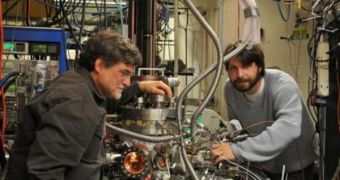In a groundbreaking, new discovery that may have significant implications for anything from energy production and global-warming mitigation to creating better and cheaper medicines and fuels, scientists at the University of Utah have recently managed to find out numerous new data on the general action mechanism of catalysts. The new paper is the first to link the size of the catalyst particles to their electronic properties and also to the ability these substances have to promote chemical reactions.
Catalysts are chemicals that are added to chemical reactions in order to either make them faster, more efficient, larger or smaller than they would otherwise occur. One could argue that catalysts are among the most important innovations ever made. Therefore, further developments in this technology could lead to significant development booms in other fields as well. That is to say, improvements in this area could boost just about everything that revolves around chemical reactions.
“One of the big uncertainties in catalysis is that no one really understands what size particles of the catalyst actually make a chemical reaction happen. If we could understand what factors control activity in catalysts, then we could make better and less expensive catalysts,” UU Chemistry Professor Scott Anderson says. The expert is also the senior author of the new paper, which was published in the November 6 issue of the top journal Science.
Anderson and his team made their discovery at the nanoscale. They watched the behavior of catalyst nanoparticles on several solid surfaces, and were able to determine that their size influenced their involvement in the chemical reaction directly. The team also discovered that size was directly correlated to the particles' electronic properties. Other experts involved in the study include chemistry doctoral students Bill Kaden (first author) and William Kunkel, as well as Tianpin Wu, a former PhD student in Anderson's lab.
“Most catalysts are expensive noble metals like gold or palladium or platinum,” he adds. “Say in a gold catalyst, most of the metal is in the form of large particles, but those large particles are inactive and only nanoparticles with about 10 atoms are active. That means more than 90 percent of gold in the catalyst isn't doing anything. If you could make a catalyst with only the right size particles, you could save 90 percent of the cost or more,” the expert concludes.

 14 DAY TRIAL //
14 DAY TRIAL //